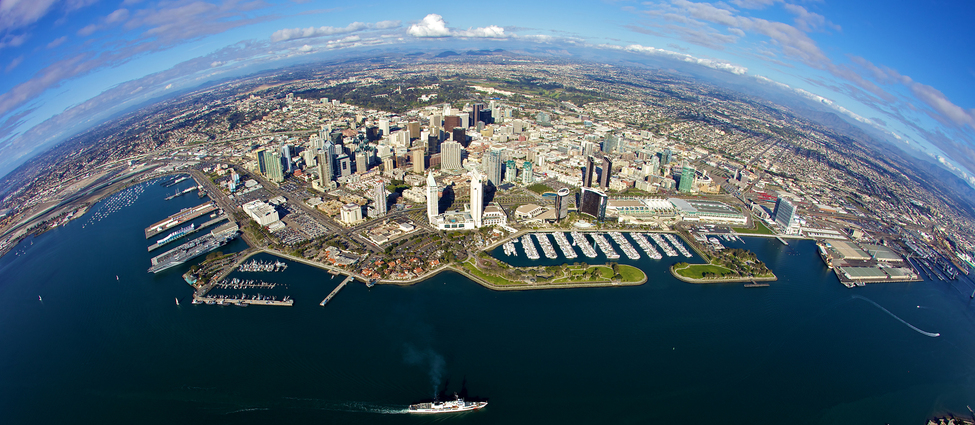

News
Nat Geo recognizes San Diego among best in world

SAN DIEGO, CA, USA -
Coolest Border Crossing
Consider this tale of two cities, separated by the busiest land-border crossing in the Western Hemisphere. On one side is San Diego, with 70 miles of sandy shores, a pioneering zoo, Tony-winning theater scene, and Southern California climate. On the other side, some 17 miles south, is Tijuana, a Mexican city defined for decades by drug traffickers.
However, just as San Diego has upped its cosmopolitan bona fides, Tijuana, with almost as big a population, is turning over a new leaf. Drugs still flow north, but cartel violence has subsided and tourism is on the rise. San Diego has noticed: The Museum of Contemporary Art San Diego exhibits such south-of-the-border painters as Alvaro Blancarte and sells out two field trips a year to Tijuana’s art studios and galleries. The New York Times has feted Tijuanero chef Javier Plascencia’s “Baja-Med” menu at Misión 19. In July, Plascencia opened Bracero Cocina de Raiz in San Diego’s Little Italy.
“Crossing the border completely changes your mind-set,” says Plascencia, who traverses this new frontier several times weekly to oversee his kitchens. “It’s such a privilege that we can live in these two cultures at once.” —David Swanson
Travel Tips
When to Go: Year-round, except for mid-May through early July (to avoid what's known as June Gloom—overcast, cool, and generally gloomy weather)
How to Get Around: Ride the San Diego Trolley blue line from downtown San Diego to the last stop in San Ysidro (one-way fare is $2.50). Walk across the pedestrian bridge leading to the Tijuana border-crossing station (passport required). On the Mexican side, follow the elevated crosswalk over the highway. From here, walk or take one of the registered red-and-black taxis to Avenida Revolución, Tijuana's main street.
Where to Stay: The Lafayette Hotel Swim Club and Bungalows in San Diego is a retro-chic reinvention of a 1940s Hollywood hideaway (Bob Hope was a frequent guest, and Johnny Weissmuller—the classic Tarzan—designed the pool). Of the 131 rooms and suites, the eight bungalows offer the most privacy, and the Suze Suites (with a bunk bed and chalkboard wall in one sleeping area) are a best bet for families.
What to Eat or Drink: Bring cash and join the line outside Las Cuatro Milpas in San Diego for home-style Mexican food (such as hand-rolled pork tacos and chorizo with eggs). Since 1933, the same family has run the hole-in-the-wall cafeteria, a landmark in the city's Barrio Logan neighborhood. Open Monday to Saturday, 8:30 a.m. to 3 p.m.
What to Buy: Make Good in San Diego's South Park neighborhood exclusively carries items made by San Diego and Tijuana regional artists. The rotating selection can include one-of-a-kind jewelry, hand-bound notebooks, and cutting boards made from locally sourced surplus wood.
What to Read Before You Go: Sunshine Noir II: Writing From San Diego and Tijuana (City Works Press, 2015) is an anthology of contemporary San Diego nonfiction, fiction, poetry, and photography.
Cultural Tip: To see Tijuana more like a (decidedly hip) local, book a four-, six-, or eight-hour private tour with Turista Libre. Tours meet on the U.S. side of the pedestrian border crossing and include round-trip border transportation in a school bus and a Tijuana-based guide.
Helpful Links: San Diego Tourism, Visit Mexico, and Turista Libre
Fun Fact: When the Chinese Exclusion Act of 1882 suspended immigration from China into the United States, many Chinese chose to settle along the border in Mexico. Baja's capital city, Mexicali, in particular, is known for its Chinese-Mexican cultural heritage and distinctive Mexicali-Chinese cuisine. At the dozens of Chinese restaurants in town, recipes regularly incorporate local ingredients such as avocado, chilies, jicama, and taco beef.
To read the original article, click on the source link below: